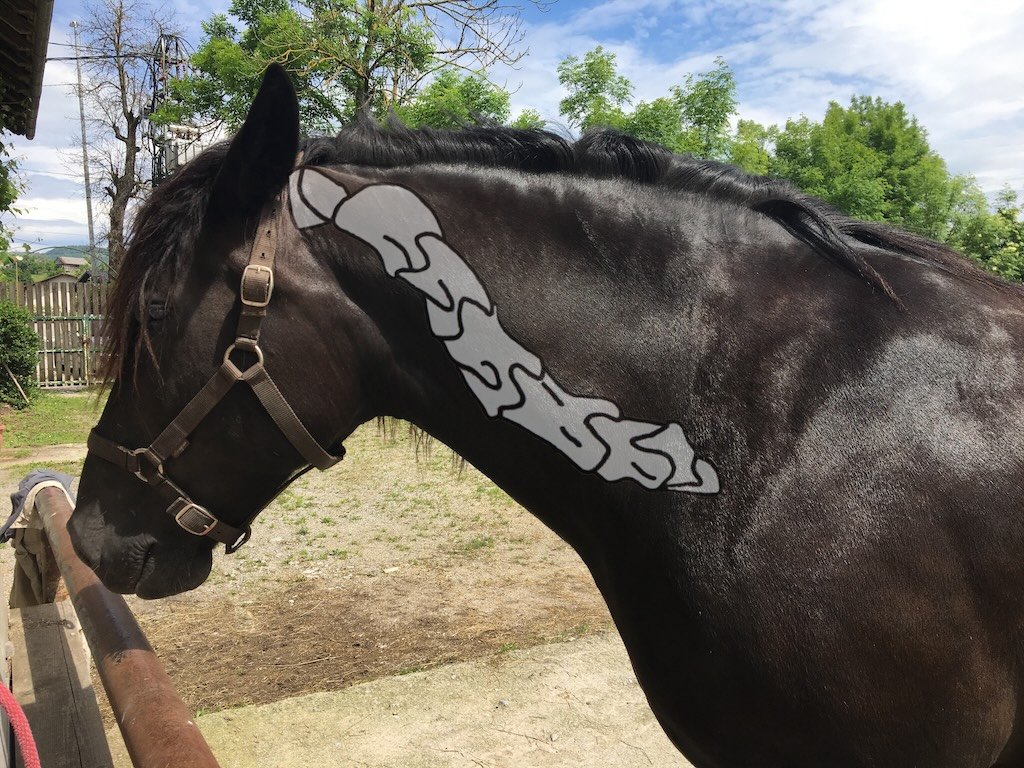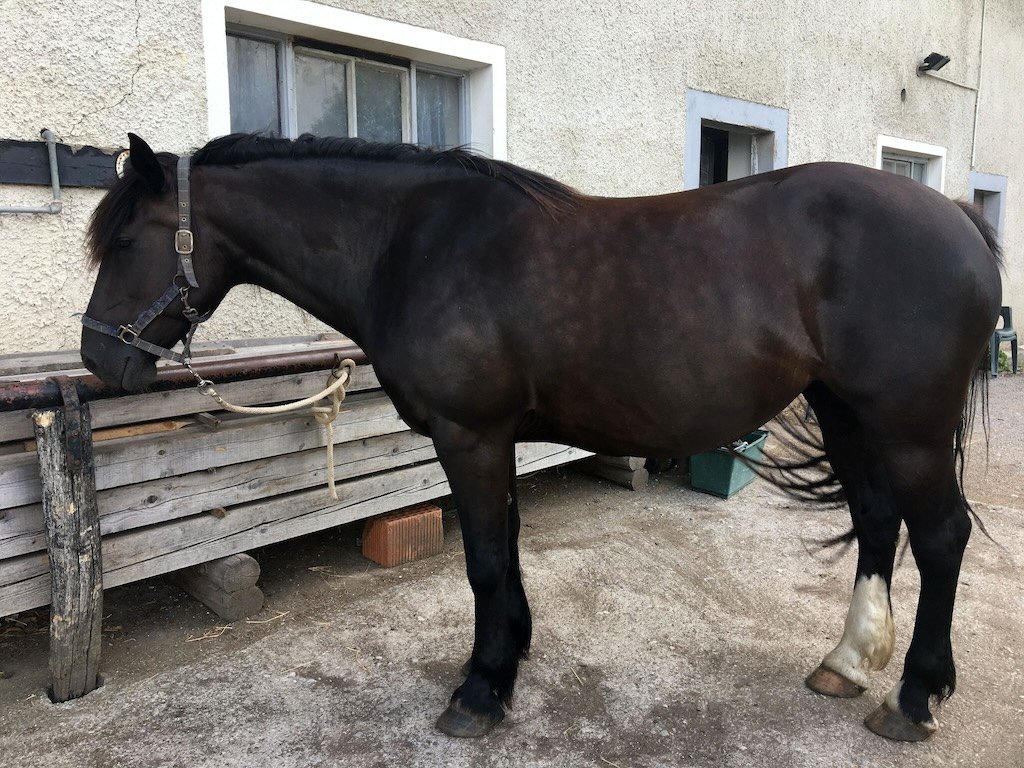Every pull-back incident is a big deal
A horse pulling back while being tied is a scary sight to witness and it should always be taken seriously.
When tying a horse, always use a quick release knot.
If you've been around horses for some time, chances are, you've witnessed a horse pulling back while tied. For me it's always one of the scariest things that happen with horses. One of those events, where time seems to stand still and your heart stops beating for a while. Is he going to break loose? Is he going to fall? Is this going to end really, really badly? Luckily most pull-back incidents end happily and the horse lives to see another day. But, even though a pull-back might seem like nothing, significant damage can still occur.
The halter sits on top of the junction between the skull and the first neck vertebrae. This junction is very important in how the horse uses his head to interact with his environment, so the area is surrounded by small muscles and connective tissue that enable precise movement. Because these muscles are small and precise, they are quite sensitive. They can become tense and painful due to a rider with a harsh hand, or due to the horse being yanked around on the lead rope. If those things can cause problems, imagine how much damage a horse pulling on the halter with all his strength can do. Tight poll muscles will negatively impact performance and in the long run, they can cause headaches and negative changes in temperament.
A pull-back can negatively impact all of the neck vertebrae.
And it's not only muscles that can be damaged. Between the first neck vertebrae and the nuchal ligament lies a bursa – a fluid filled sack that enables smooth movement between the tissues in this sensitive area. This bursa can become permanently damaged due to a pullback episode and the horse can have problems with it for the rest of his life. Have you ever seen a horse that has a giant bulge just behind his ears? Chances are he had damaged the bursa at some stage in his life.
Tension caused by pulling back can be immediately obvious, or it can show up as an issue in a couple of weeks or months. Tightness in the poll can start to cause issues down the line. Imbalance in the joint between the skull and the first neck vertebrae can cause issues with the TMJ and in turn, the teeth. It can cause tension in the neck muscles and prevent the horse to properly use his thoracic sling. Some poll problems even show up as a hind end issue. The longer the issue persists, the further it spreads through the body. So, an issue with a hind leg can actually stem from a pull-back incident that might have happened months ago.
This is why it is always a good idea to treat a pullback incident as a serious thing. If it happens, make sure to inspect the poll closely, and observe the horse and his behaviour for the next couple of days. Check to see if there is any swelling, heat or sensitivity in the poll muscles. Even if he seems to be ok, it is a good idea to get a bodyworker out, to make sure the poll muscles haven't responded to the incident with tightness and pain.
Only tie a horse if you are certain that he is used to it and knows how to tie well.
As with most things, prevention is better than cure, so make sure to avoid pull backs as much as possible. Take the time to teach the horse how to yield to pressure and how to properly tie. Avoid using rope halters or halters that don't break when tying your horse. Always use a quick release knot, so you can release the horse immediately, if he starts to panic. All of this will significantly lower the chances of the horse pulling back, but never forget that horses can be unpredictable and pull backs can occur even in horses who generally know how to tie well.
More info about the poll: HERE


